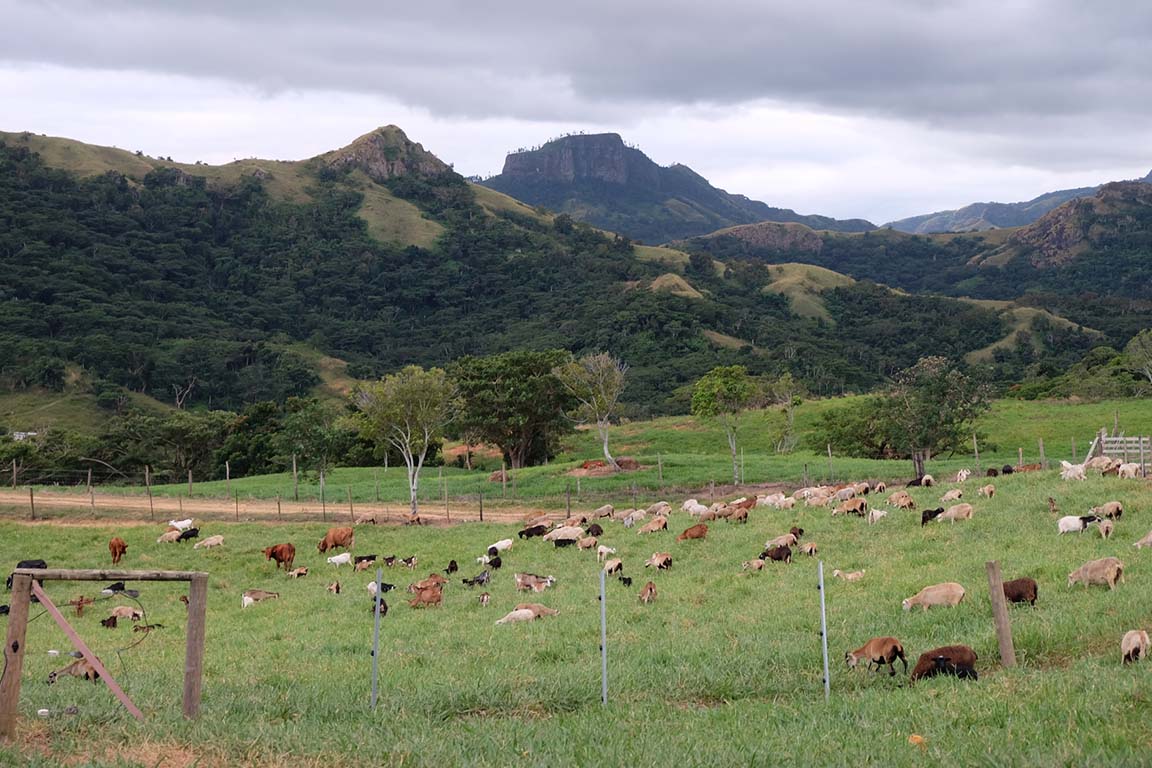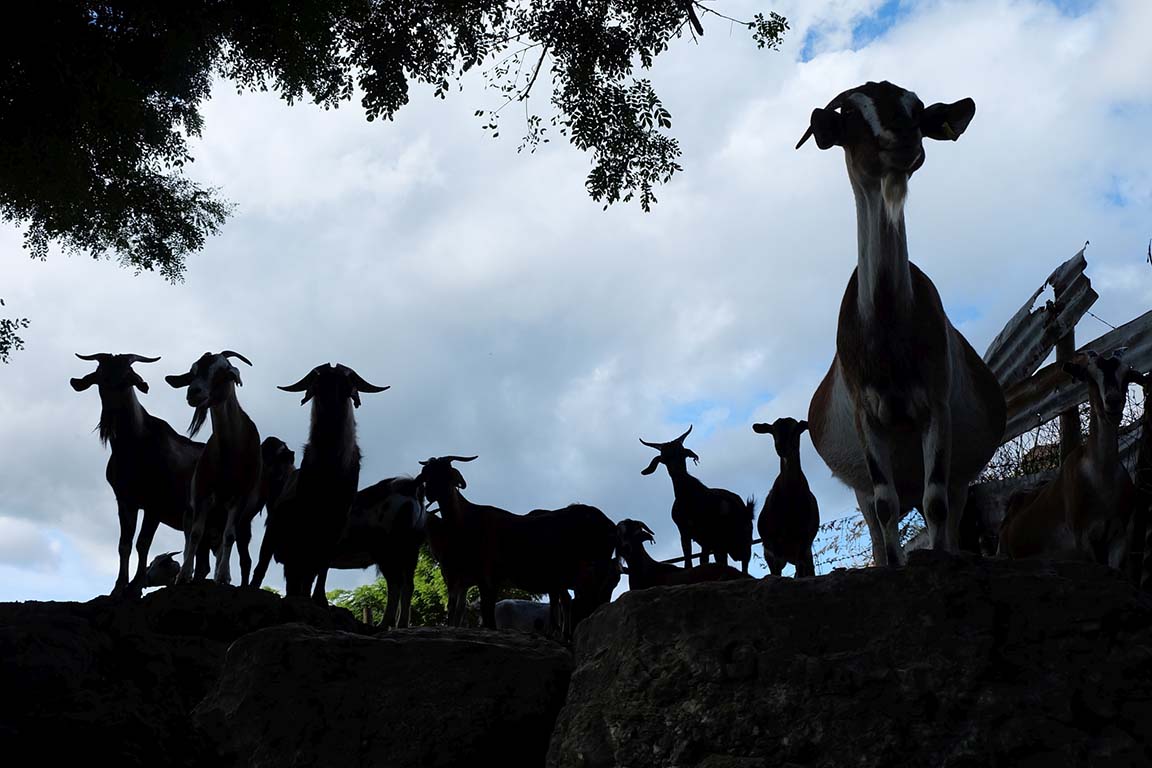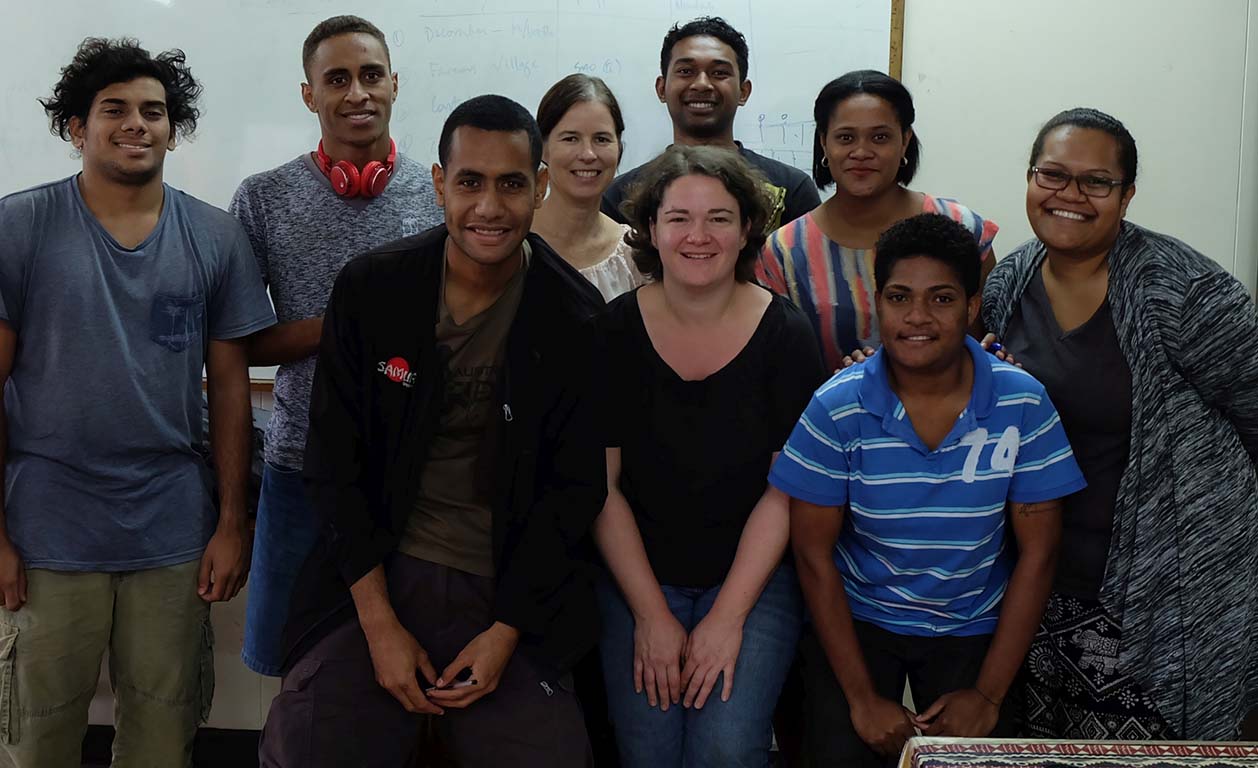Out of office: catching goats and sheep in Fiji!
“Would you like to join fieldwork in Fiji in three weeks?” my colleague Fran Cowley asked me in May. Well sure! What a great opportunity to dive, into research for development for my new position as International Research and Training Program Leader for Livestock Systems at UNE. Palm trees, sand, the magnificent Pacific come to mind! But both of us being animal scientists, the focus was slightly different! Our focus is on small ruminants (sheep and goats for all non-animal scientists out there). Fran is working on animal nutrition and livestock systems and currently leading a team from the University of New England (UNE) in a project on small ruminant production systems in the Pacific Islands funded by the Australian Centre for International Agricultural Research (ACIAR). As UNE newbie I brought my expertise on animal breeding and innovation research to the team that also includes Geoff Smith, our market chains expert and Michelle Carnegie, a livelihoods and gender specialist.
So what is it all about?
Sheep and goat meat is popular in Fiji and in other Pacific Islands states. So popular that Fiji imports it for USD 15.4 million annually with New Zealand providing the largest chunk of USD 12.6 million in 2016. A lot of money that could stay to benefit local producers. And yes, Fiji’s agriculture is changing. The sugar cane sector is facing an end of preferential pricing from the European Union. Urban migration leads to a scarcity of agricultural labour. Farmers are looking for additional options. Sheep and goats have been identified as an important alternative enterprise for Fijian farmers by the government. ‘Fiji Grown’ is gaining recognition as a brand (even the Fijian Rugby team is advertising for local produce). This creates additional momentum for local producers.

The mixed sheep and goat farm of a smallholder in Vaivai, Viti Levu, Fiji. A rare example of an improved pasture area shows opportunities for production intensification. © Roschinsky
There is opportunity! But what struck me most was to learn how weak current links between local agricultural producers and the big player tourism actually are. The contrast between the luxury of high-end tourist resorts and the simple lifestyle of most Fijians, especially farmers, is arresting. How can agriculture and tourism join forces to improve local livelihoods? And how can I as researcher contribute?
A good starting point would be to source more food from the islands, rather than importing supplies from overseas. So our project1 starts with goats and sheep. The advantage: they have their place on most farms already. But so far they are a secondary operation for the majority of farmers we have talked with during a series of focus group discussions, household surveys and on-farm data collection. Farmers recognise the benefits of small ruminants: Easy management, a good number of births per year and relatively low production costs.

They know what’s coming! Goats during on-farm data collection that involved measuring animals and pastures and collecting faecal samples. Not the first thing one imagines as far as Fiji activities go © Roschinsky
Farmers want to grow their flocks, but they face many challenges: a lack of qualified veterinarians, low-quality feed, insufficient pasture management, poor fencing, lack of breeding management, high parasite pressure and difficult market access. Beyond farm level natural disasters (Fiji is still recovering from cyclone Winston), complex land tenure systems and climate change affect goat and sheep production as well. Small-scale production and short, local, seasonal market chains (most farmers rely on farm gate sale during festival seasons) make it difficult to achieve a sustainable supply for growing urban centres.
The Fijian government wants to improve local production through recent imports of breeding animals from Australia and grants support for infrastructural investment. But what needs to go hand in hand is capacity building and technological solutions fitting local production and marketing systems. Otherwise, investments will not be sustainable. And we need to ensure that women and youth share in the benefits of an improved small ruminant sector.
Lots to do! And our research project will start addressing these issues, using knowledge gained during this field trip, and develop future activities. Together with our partners in Fiji – Pacific

That’s a wrap! Final picture with our great student research team from the University of the South Pacific after the last workshop in Nausori. Back row from left: Sanyal Chetty, Ephraim Moore, Michelle Carnegie, Ratu Bola Waqanisau, Asela Erasito und Joana Veisamasama. Front row from left: Tevita Lasaitoga, Romana Roschinsky and Merewai Rita Naulu.© Roschinks
Community (SPC), Ministry of Agriculture and University of the South Pacific – and ACIAR we are currently identifying how we as researchers can contribute to sorting out some of the challenges sheep and goat producers in Fiji face. The project team would like to thank ACIAR, all participating farmers and our partners in Fiji for supporting our research. 1http://aciar.gov.au/project/lps/2016/021


